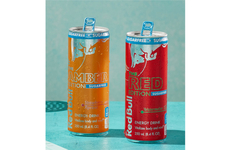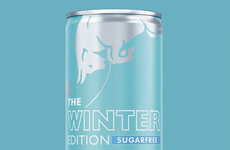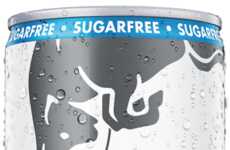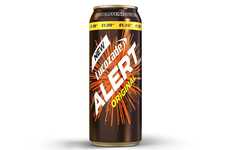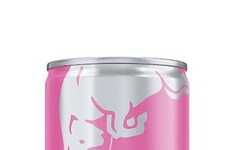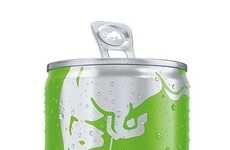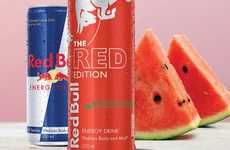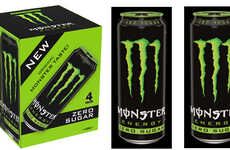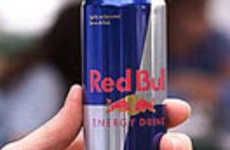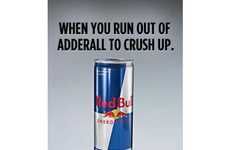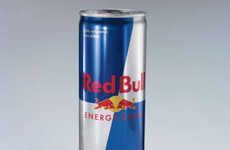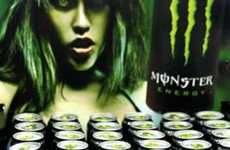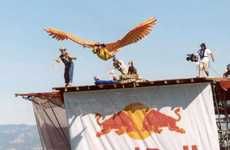
Red Bull Sugarfree TV Spot
References: redbull & talkingretail
Red Bull originated in Thailand but after being tweaked to satisfy Austrian palettes, quickly became the world's most famous energy drink. In 2003 they launched a Sugarfree which become wildly popular; today, nearly one in five cans sold are the artificially sweetened variety.
Red Bull has launched a new TV spot to capitalize on the eight calorie per can variety. It's not available yet online, but another recent ad can be seen above.
"We're very fortunate, our product does something. It's an energy drink and it works," UK Managing Director, Nigel Trood told U Talk Marketing. "On the back of that we've attempted to build a brand experience that consumers associate as something positive and leaves them with a good memory."
"It's also seen as an inspirational product, a silver can that people like to be seen drinking with associations of a 'cool' and premium drink."
Each year Red Bull does market research with one million consumers. Believe it or not, their main target group is 14 to 19 year olds! It might sound a little young to be consuming large amounts of caffeine, but it all boils down to sales, and these are the kids who want to buy.
Red Bull has realized people want the same energy, but don't want the calories, a consumer fact they wants bar owners to become more aware of. So how long before we see an ad building off the popularity of the Jaegerbomb?
The best advertisement they can get though is probably the celebrity endorsement they get, as illustrated by the gallery.
Check out some more Red Bull marketing:
Red Bull has launched a new TV spot to capitalize on the eight calorie per can variety. It's not available yet online, but another recent ad can be seen above.
"We're very fortunate, our product does something. It's an energy drink and it works," UK Managing Director, Nigel Trood told U Talk Marketing. "On the back of that we've attempted to build a brand experience that consumers associate as something positive and leaves them with a good memory."
"It's also seen as an inspirational product, a silver can that people like to be seen drinking with associations of a 'cool' and premium drink."
Each year Red Bull does market research with one million consumers. Believe it or not, their main target group is 14 to 19 year olds! It might sound a little young to be consuming large amounts of caffeine, but it all boils down to sales, and these are the kids who want to buy.
Red Bull has realized people want the same energy, but don't want the calories, a consumer fact they wants bar owners to become more aware of. So how long before we see an ad building off the popularity of the Jaegerbomb?
The best advertisement they can get though is probably the celebrity endorsement they get, as illustrated by the gallery.
Check out some more Red Bull marketing:
Trend Themes
1. Low-cal Energy Drinks - Disruptive Innovation Opportunity: Develop and market low-calorie alternatives to traditional energy drinks to meet the growing demand for healthier beverage options.
2. Targeting Young Consumers - Disruptive Innovation Opportunity: Create marketing campaigns and products specifically designed to appeal to the 14 to 19-year-old demographic, who are willing to purchase energy drinks.
3. Celebrity Endorsements - Disruptive Innovation Opportunity: Collaborate with influencers and celebrities to promote energy drinks and attract a wider consumer base.
Industry Implications
1. Beverage Industry - Disruptive Innovation Opportunity: Develop innovative beverages that cater to the consumer demand for low-calorie, energy-boosting drinks.
2. Marketing and Advertising Industry - Disruptive Innovation Opportunity: Create targeted marketing campaigns and strategies that effectively reach and engage the 14 to 19-year-old consumer segment.
3. Entertainment Industry - Disruptive Innovation Opportunity: Collaborate with influencers and celebrities to create entertaining and engaging content featuring energy drinks for promotional purposes.
4.8
Score
Popularity
Activity
Freshness


